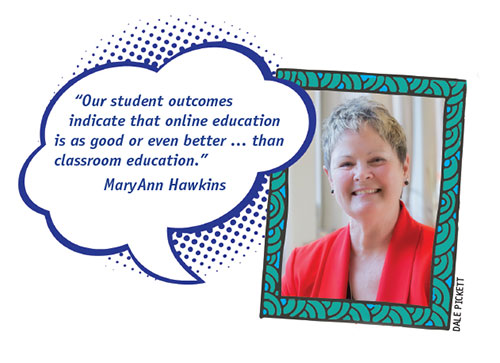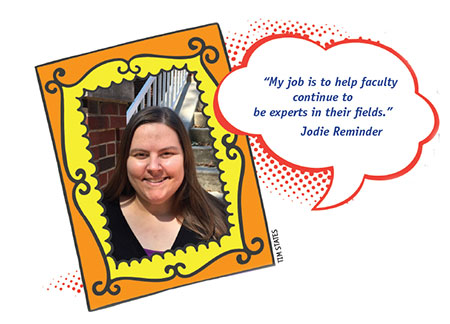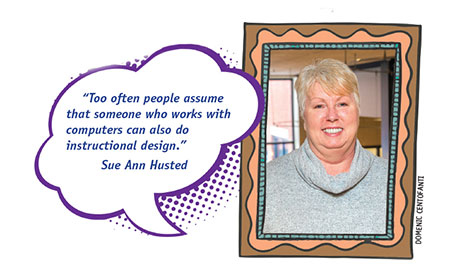When MaryAnn Hawkins joined the faculty at the Anderson University School of Theology, a fellow professor with a knack for technology helped her create her online classes. “We called him our ‘seminary guru,’” says Hawkins. “He recorded my lectures — just the audio — and then we added a few PowerPoint slides.”

Thirteen years later, things have changed. The guru has retired, Hawkins is dean, and faculty members have access to a professional instructional designer who serves the entire campus, including its embedded seminary. Online enrollment is double the residential population, and Hawkins credits the designer’s presence with helping the school avoid many of the obstacles identified in a recent Auburn Studies report, (Not) Being There (read more about this report). The designer, Jodie Reminder, attends monthly staff meetings and has a regular slot on the agenda. She enjoys a collegial relationship with faculty, provides them with updates on new products, and shares teaching tips that enhance online education. She knows her role — and its limits — and takes care not to stray into course content.

“Faculty members are the experts in their fields,” says Reminder, who has a master’s degree in learning strategies from Purdue University. “My job is to help them continue to be experts in their fields. They shouldn’t have to read tech manuals. That’s my responsibility. In some ways I’m a sounding board; I do a lot of listening.” Based on that listening she helps them “translate what they do in the classroom to an online experience.”
Full-time instructional designers are common on university campuses but rare at smaller, freestanding seminaries. “Instructional designers and instructional technologists are often confused, but the titles aren’t interchangeable,” say Sue Ann Husted, who has held both positions at various institutions during her 24-year career. Now an instructional design and technology consultant at Ball State University, she explains the difference between instructional design and instructional technology this way: An instructional designer helps faculty work through pedagogical online learning difficulties, while an instructional technologist teaches faculty to use the technology that fuels online education.

“Too often people assume that someone who works with computers can also do instructional design,” says Husted. But the designer’s duties go beyond technical skills and often include educating faculty on the needs and wants of online learners. Chief among these needs is convenience. “The instructional designer spends a lot of time explaining how faculty can repackage classroom curriculum to meet the convenience goal of the online learner,” says Husted. This involves “chunking,” which she defines as “taking course content and putting it in small, palatable bites for students to consume” on their own time.
At Anderson University, the process begins with Jodie Reminder asking a professor to articulate the learning objectives of a course. Together they break down the content into chunks and determine the learning that must take place in each chunk in order to meet course objectives by the end of the semester. Then they choose and create the activities that will stimulate the learning that will accomplish the objectives. For faculty making the switch from classroom to online instruction, “it can be a struggle, but they get into the groove,” says Reminder. Resistance to her role has been nonexistent, even among senior staffers.
Hawkins attributes faculty buy-in to the fact that all online classes are designed — with Reminder’s help — by the professors who teach them. “We don’t hire someone to put together a class and then assume anyone can facilitate it,” says Hawkins. The results of the collaborative process have been positive. “Our student outcomes indicate that online education is as good or even better, in some cases, than classroom education.”